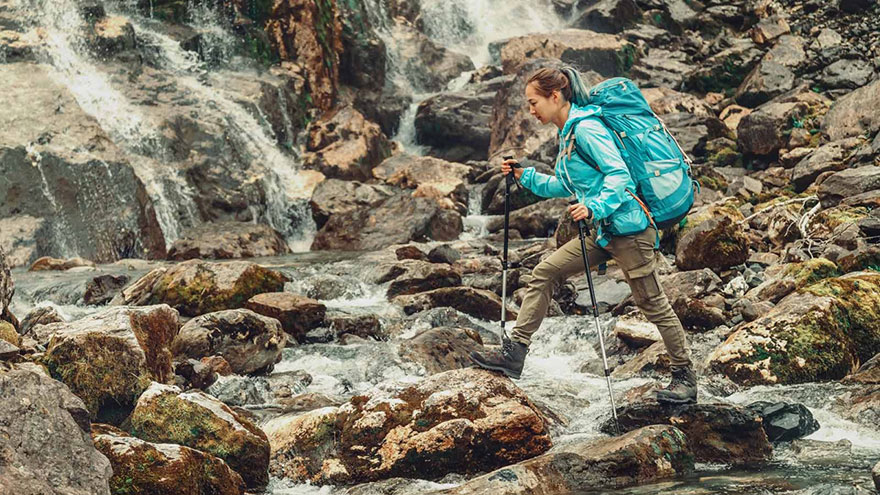How to Use Walking Poles
Walking with trekking poles, also known as Nordic walking, originated in the 1930s in Finland when cross country skiers sought a method of training during warm weather and when snow was scarce. Also called pole walking and ski walking, Nordic walking adds an upper-body element to what is predominately a lower-body activity and increases the number of calories burned compared to regular walking.
Using poles when walking also helps reduce the amount of force placed on your lower body which can alleviate foot, knee and hip discomfort and provides balance and stability on uneven surfaces.
Types of Trekking Poles
Trekking poles are made from a variety of materials but ultra-light, super-strong carbon fiber, aluminium and wood are the most common. Some poles, mainly those made of wood, come in fixed lengths, while carbon fiber and aluminum poles are generally adjustable.
There are also collapsible trekking poles available for when size and portability are issues, such as when traveling by plane. Trekking poles come fitted with or without hand straps and some poles can also be fitted with rubber end caps, called paws, which make them ideal for walking on asphalt.

Sizing Your Trekking Poles
To get the most from trekking poles, they must be set to the correct height. If your poles are too long, you will be unable to put much weight on them, and if they are too short, you may end up leaning forward too much which can lead to poor posture and back ache. Stand on a firm, flat surface and hold the poles vertically by the handles.
Position the tips so that they are next to your toes. With your upper-arms close to your sides, adjust the length of your poles so your forearms are parallel to the floor. Once your poles are the correct height, lock them securely in place as a collapsing pole could lead to injury. For long ascents or descents, adjust the length of your pole to ensure your forearms remain parallel to the ground — on descents, lengthen the poles slightly and shorten them for ascents.

Walking With Trekking Poles
Walking with trekking poles may feel unnatural at first but with a little practice should become second nature. If your poles have straps, slip your hands into the loops from below so the straps are around your wrists. Then drop your hands down to grasp the handles and straps together. This should give you a firm but relaxed grip.
When walking on level terrain, swing your left pole forward as your step out with your right leg and plant the pole so that it is pointing slightly backward. Your arm should be extended from your shoulder with your elbow slightly bent. Push down on the pole to give yourself a little forward propulsion. Move into your next stride and swing your opposite arm forward. Try to keep your arms relaxed and do not hunch your shoulders.

Using Trekking Poles on Difficult Terrain
Trekking poles can make walking on difficult terrain much easier and potentially safer. On very steep ascents, swing both poles forward each time you step and keep the poles vertical to provide more the support and propulsion.
On long traverses across steep slopes, shorten the uphill pole while lengthening the downhill pole to help keep your body upright and to maximize stability and balance. When crossing obstacles such as boulder fields or log bridges, raise your poles out to your sides like a tightrope walker uses a balance pole.

You Might Also Like :: How to Improve Cardio Endurance

